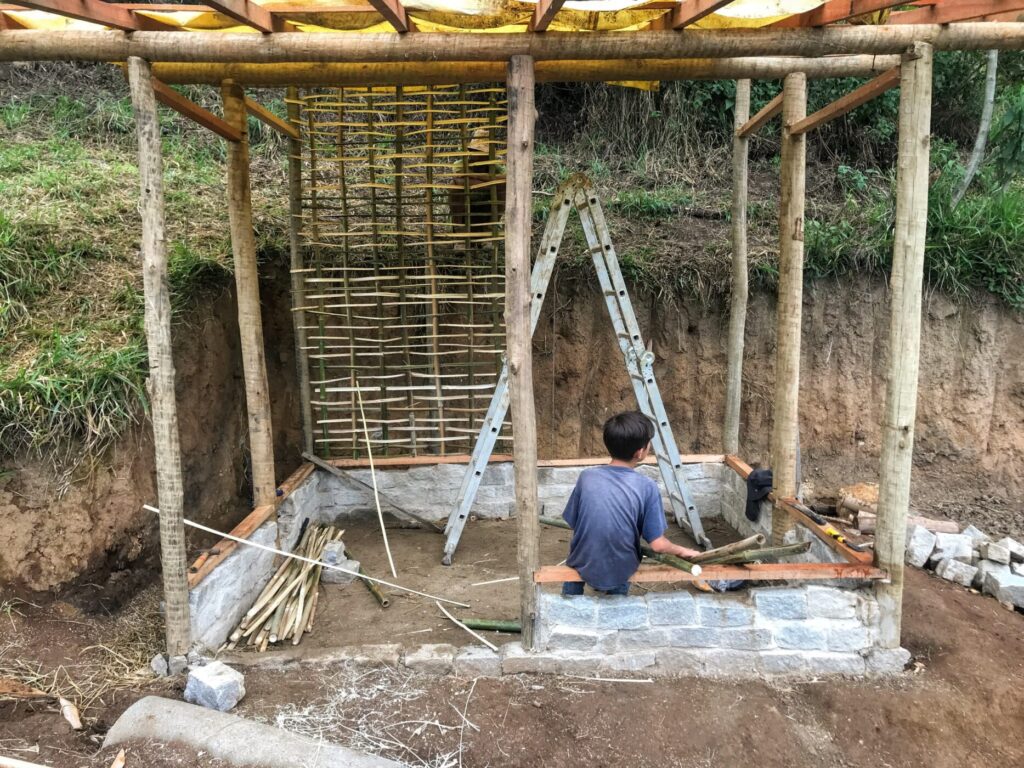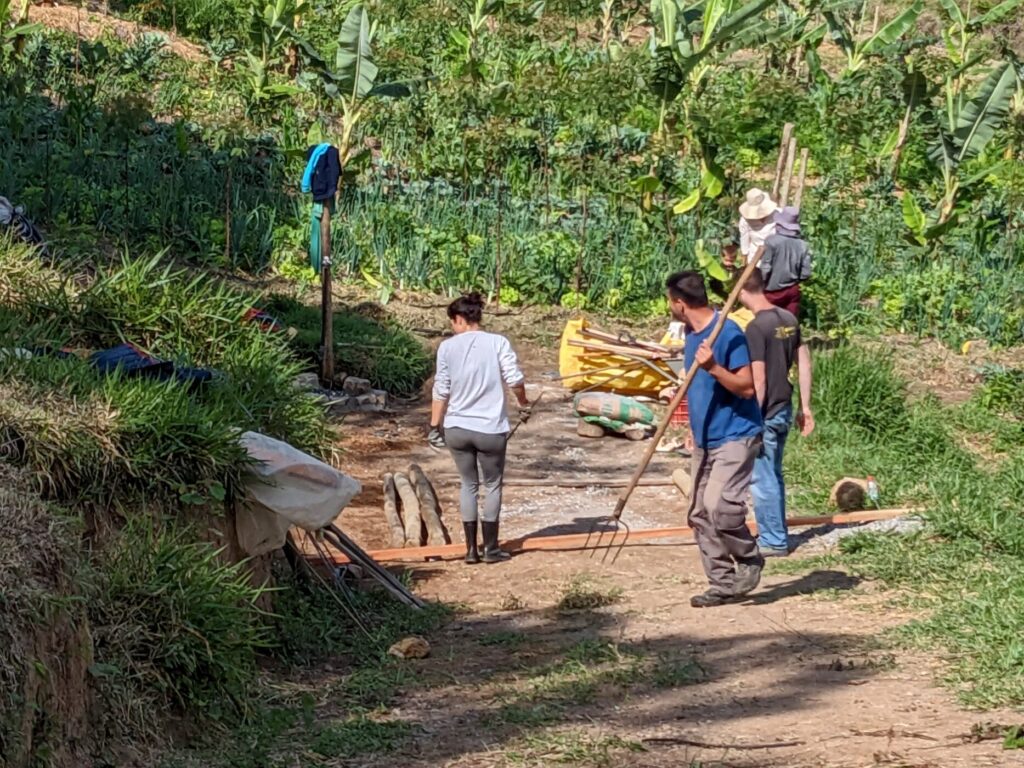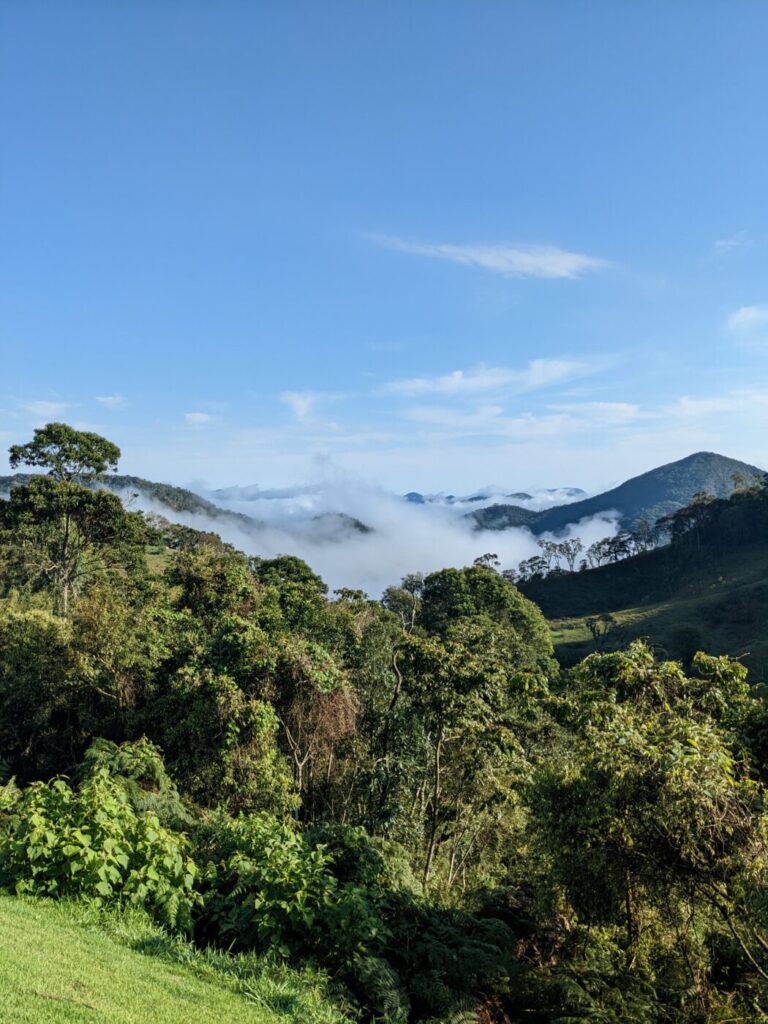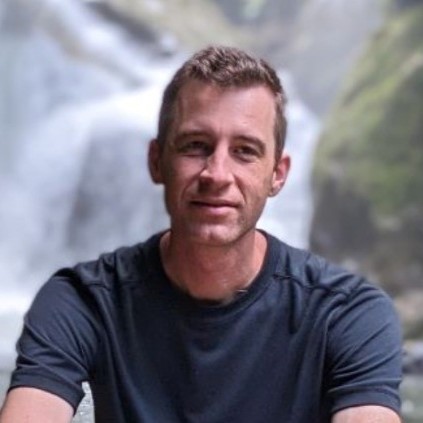A Web of Give and Take — Surprising Links Between Agroforestry and Social Work
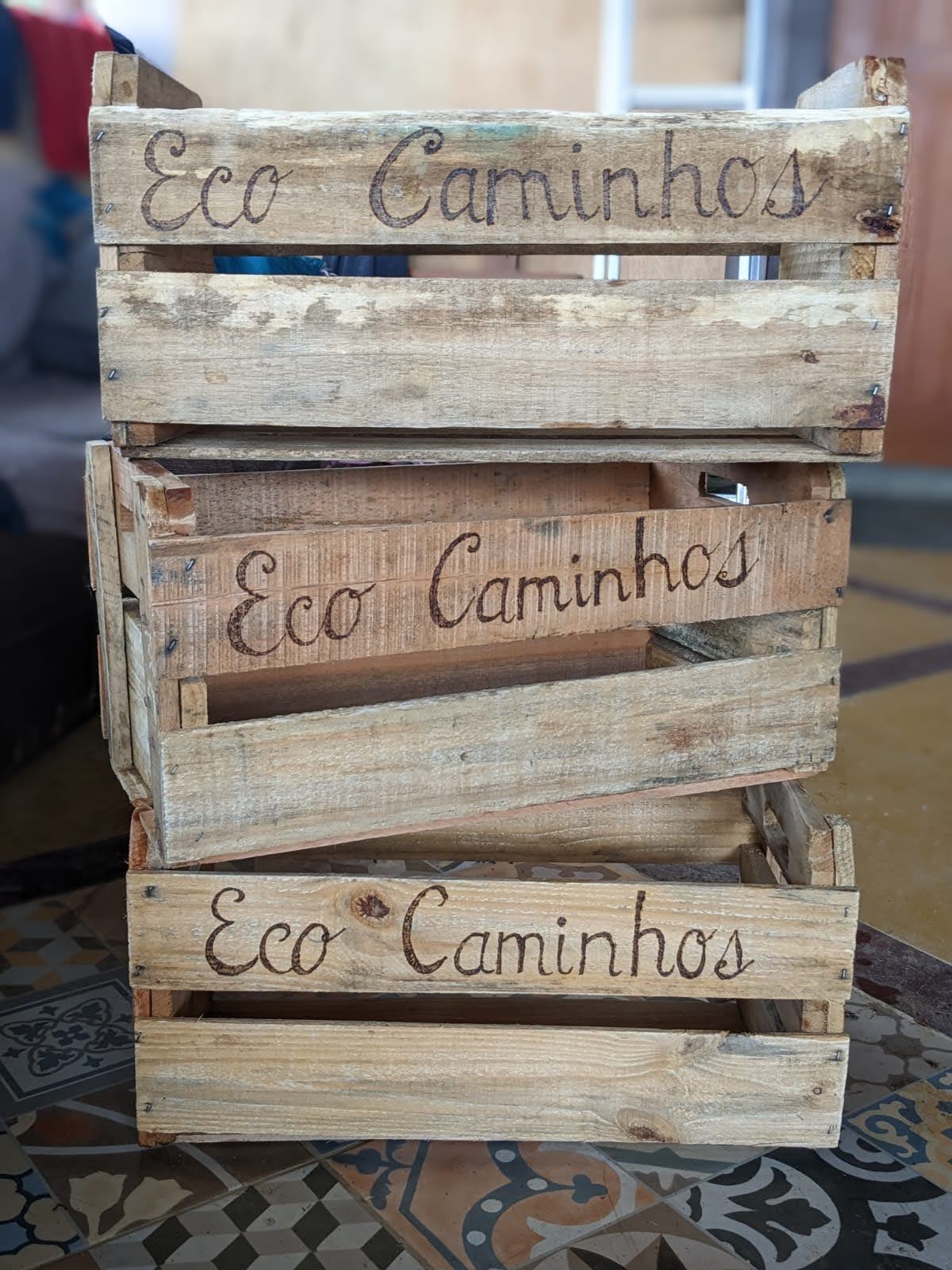
At Eco Caminhos permaculture farm, we encountered a philosophy of farming and social work that prioritizes variety over scalability.
Rather than approaching life improvement and growing food as a math equation of inputs and outputs, Eco Caminhos practices a philosophy of self-sustaining and self-reinforcing systems.
An Eclectic Crew
At the Eco Caminhos permaculture farm, work begins at seven. The volunteers pile into the back of the pickup to avoid the difficult slog uphill to the heart of the farm. The truck strains up the mountainside in first gear with its human cargo packed in like French fries.
We gather at Colmeia (Portuguese for beehive), where lunch, vegetable processing, and the daily meetings occur.
To call the group of people that report at Colmeia every morning diverse is an understatement. The crowd is downright eclectic.
If our community was a patchwork quilt it would have squares of fine cashmere alongside threadbare long johns. It is quite amazing that we all get along, much less communicate. Yet somehow, that seems to be the point.
An Eclectic Community
The core group of workers on the farm are the apprentices. Bart, the project’s founder and director, has known most of them since earlier days when he ran an orphanage in Rio de Janeiro. Without exception, they come from tough backgrounds and some still struggle with old vices. They are the ones who teach us newcomers and short-termers how to do our tasks.
The volunteers come for as little as a few days or as long as a year or more. They also come from various backgrounds. Since we’ve been here, we’ve worked alongside a retired Brazilian woman, two college-aged Dutch guys (didn’t know each other before coming), an American girl just out of high school, two Italian women architects taking a break from their busy careers in Germany (a total coincidence, they also didn’t know each other before coming), and a Bangladeshi-Canadian family with two boys. Those are just to name a few.
Then there is us: an American family of five. Financially mediocre by U.S. standards, but quite wealthy by Brazilian standards. Traveling abroad for a year. Trying to reset our lives and reimagine our future.
Everyone is here for different reasons and has a range of expectations for the experience. Each volunteer is under different terms and timeframes. Some of us pay handsomely, some stay for free, others are somewhere in between. Some work five days, others three, others have a more flexible schedule. We all come with very different strengths and weaknesses. We give and we receive.
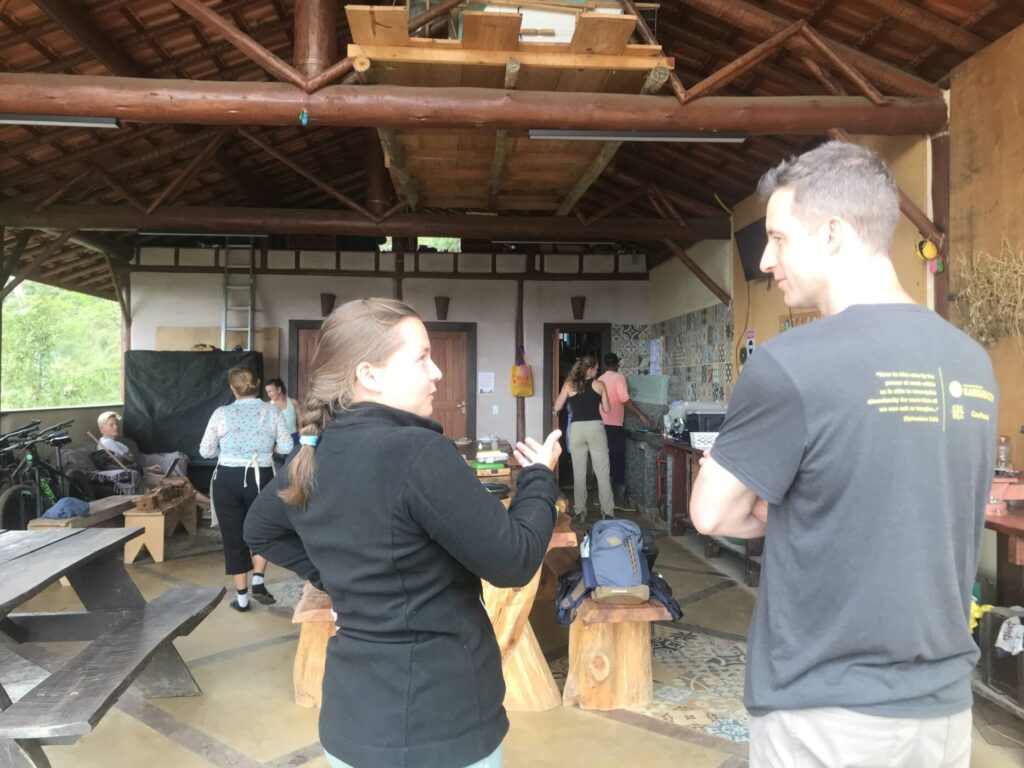
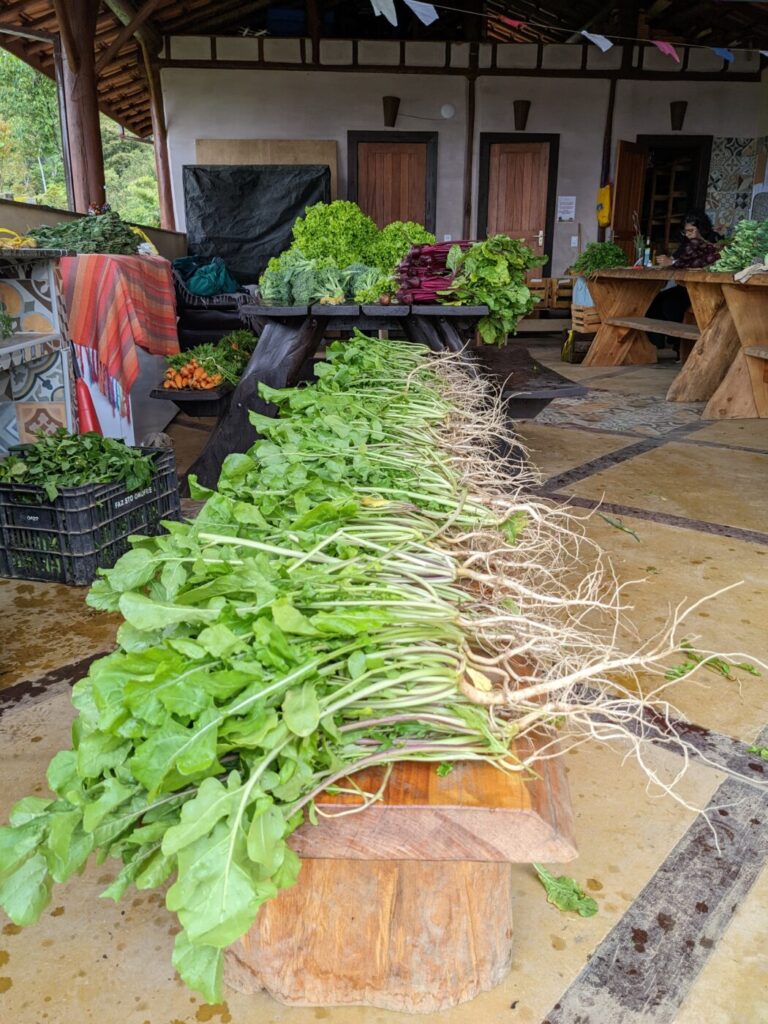
Basics of Agroforestry (From Someone Who’s Never Grown a Garden)
After our opening meeting, we break off into several teams. Most will be tending to the agroforestry. Each apprentice leads a group of short-term volunteers to one of the agroforestry sites. That is where the developed-world city-slickers get schooled in the most basic function of civilization: putting food on the table.
Forget everything you know about planting a garden. This is not your square of dirt, sectioned off with cute labels at the end of each row and ample space between each shoot.
In the simplest terms, agroforestry is agriculture that mimics a forest. The jungle doesn’t section itself off into monocultures. Plants grow (sometimes quite literally) on top of each other. Every tree, vine, and shrub jams itself into wherever there’s a square inch of dirt and a ray of sunshine.
That’s not to say there isn’t order in a natural forest. It’s just not where you’d think to look.
Order in the Forest
Forests order themselves vertically. They grow in stratums.
At the very top, the emergent and high stratums take on the brunt of the sunlight. This is far from a selfless act. These species crave sunlight for photosynthesis. Like a bully that shoves his way to the front of the line, they selfishly shoot up and steal as much sunshine as they can.
Lower stratum species — like this Gringo programmer who hasn’t seen a beach in nine months — will get torched in full sunlight. Species such as coffee thrive in partial shade. I can relate to coffee.
That is just one of the more visible ways that different species support each other. Beneath the surface, root systems communicate and share resources through fungal webs. Some plants fix nutrients in the soil. Others drop their leaves and branches, building the soil and covering it to retain moisture. There are probably ways that plants help each other that humans have yet to observe.
Plant life is indeed mysterious. Each plant in an ecosystem participates in a complex web of giving and receiving. And that web is responsive to systemic threats. It is said that pruning one tree in such a system stimulates growth in other neighboring trees.
We might not be able to decipher it all in a computer model. But by following nature’s lead and planting forests, so the thinking goes, we can recreate nature’s abundance for ourselves.
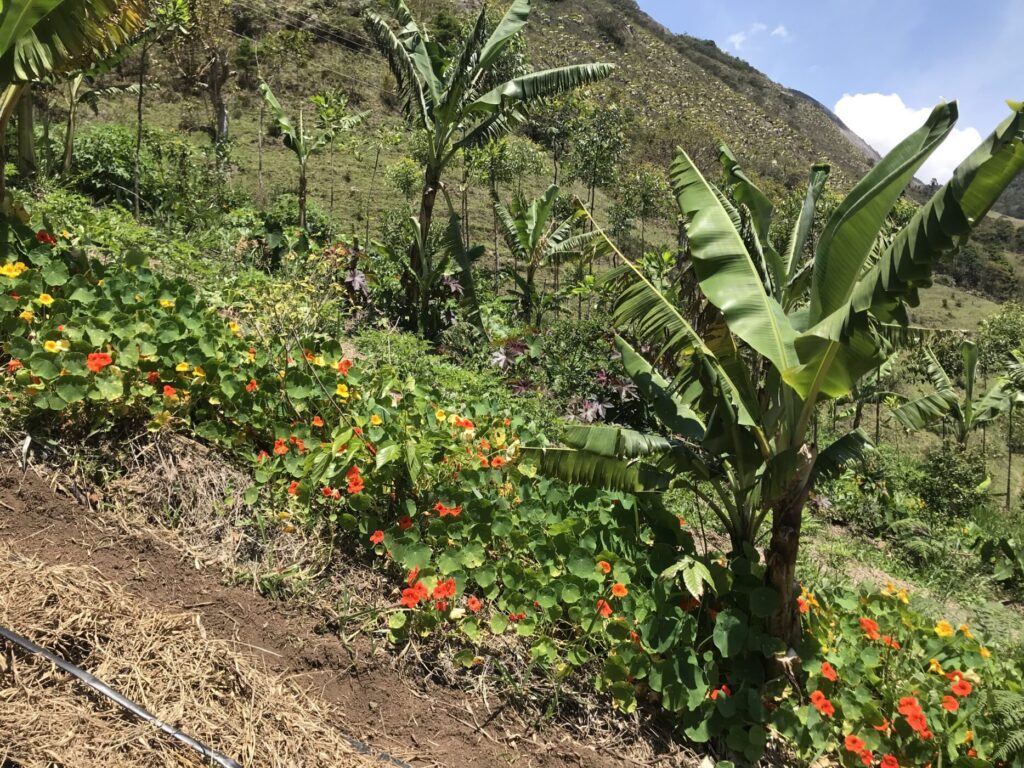
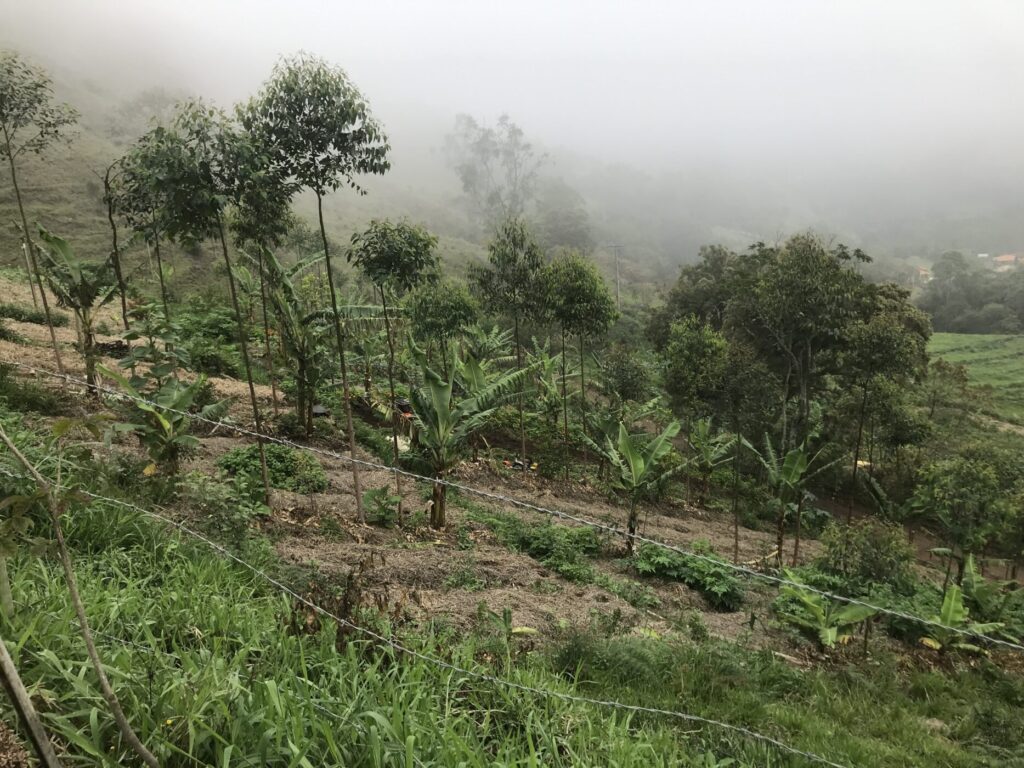
Surprising Lessons from Agroforestry
The ethos and guiding principle of agroforestry is variety and complexity. Jam as many species into one plot of dirt as possible. Overplant. You can always thin out later and benefit from the added biomass (a fancy term for dead shit and, well, shit).
It violates everything you’ve ever learned about gardening and planting.
It’s hard to fully appreciate the genius of this approach until you are literally down in the weeds tending to it. In my case, I was taking a day away from my usual bioconstruction duties and helping to harvest green onions.
The onions poked their sharp tubular lances up between pavilions of lettuce. Cornstalks towered over the abundant understory, taking the edge off the harshest rays of sunlight.
As I fished around for the base of the onion stalks, I felt the loose humid soil underneath, protected from desiccation by the shade and regenerated by decaying plant matter left from prior pruning, thinning and weeding.
It didn’t take an expert in farming to sense that the soil was healthy and brimming with life. But who can keep up with all that complexity?
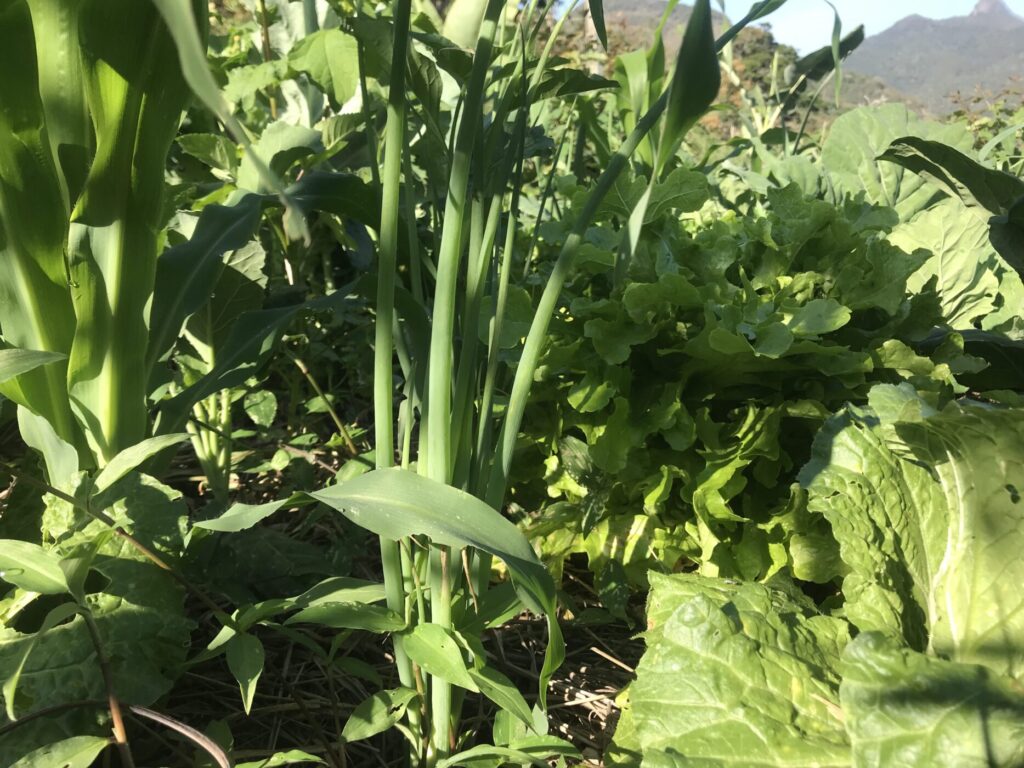
Letting Nature Do the Work
On its face, agroforestry seems disastrously complicated to manage. It is the opposite of streamlining and simplification. It strains the mind to remember what is where. All sorts of things are ripening at once in different places. Other places need new seeds. One wonders how it all gets tended with just a handful of volunteers.
But all that complexity comes with a major upside. It takes care of itself. The web of give and take between the plants, the soil, the insects, and the rest of the ecosystem solve their own problems. Nobody has to baby a forest to help it grow and survive. It just does.
Contrast this to a crop I used to see as a child growing up in northern Wisconsin — ginseng. I witnessed fields as far as the eye can see planted with this single lucrative root species. Since its natural niche is the forest floor, farmers manufacture artificial shade using an immense quantity of wood posts to hold up shade cloth. (If you’ve never seen a ginseng field, this article has some good photos).
Planting a single crop of ginseng sounds simple until you consider all the inputs of money, material, and effort required. In other words, you are cutting down a real live forest, transporting it with energy from fossil fuels, and painstakingly building a dead (and ugly) simulation of a forest. It’s expensive. Why not save yourself the work and plant it in a forest! And when you’re done, you still have the trees to harvest for lumber.
Agroforestry does away with artificial inputs and delegates those problems to nature.
Can everybody do it?
So why doesn’t everybody do it. Now!
Not being a farmer, or even a gardener, I’m not in a place to tell conventional farmers what to do. In the long-term, Eco Caminhos hopes to prove itself as a working model for other farmers in the region. But until it can turn a healthy profit off its agroforestry operation, that day must wait. (For now, it makes most of its money from eco-tourism.)
I have my own doubts about agroforestry as an immediate universal solution. While I think they are on to something, I question it’s scalability. If you took the land used for production at Eco Caminhos and figured out how many people it feeds, then extrapolated it to all the farmland in the world, would it meet the world’s needs? I’m not sure and I don’t know if anyone has tried to figure it out. It seems too experimental at the moment to make that leap.
Here is another obstacle. Could a farmer of modest means convert to agroforestry and quickly turn a profit? If the answer is no, then the technique is still only available to hobbyists with cash to invest or as alternate income to ride out the unprofitable years.
But those hobbyists might still be performing a critical function. A person living in the 1950s would have been mistaken to criticize early mainframe computers as impractical for the average consumer. Without that early stage of development, you wouldn’t be reading this post today on the device in your hand or on your lap.
Maybe, one day, my great grandchildren will drive the interstate through my home state of Illinois surrounded by forests instead of cornfields.
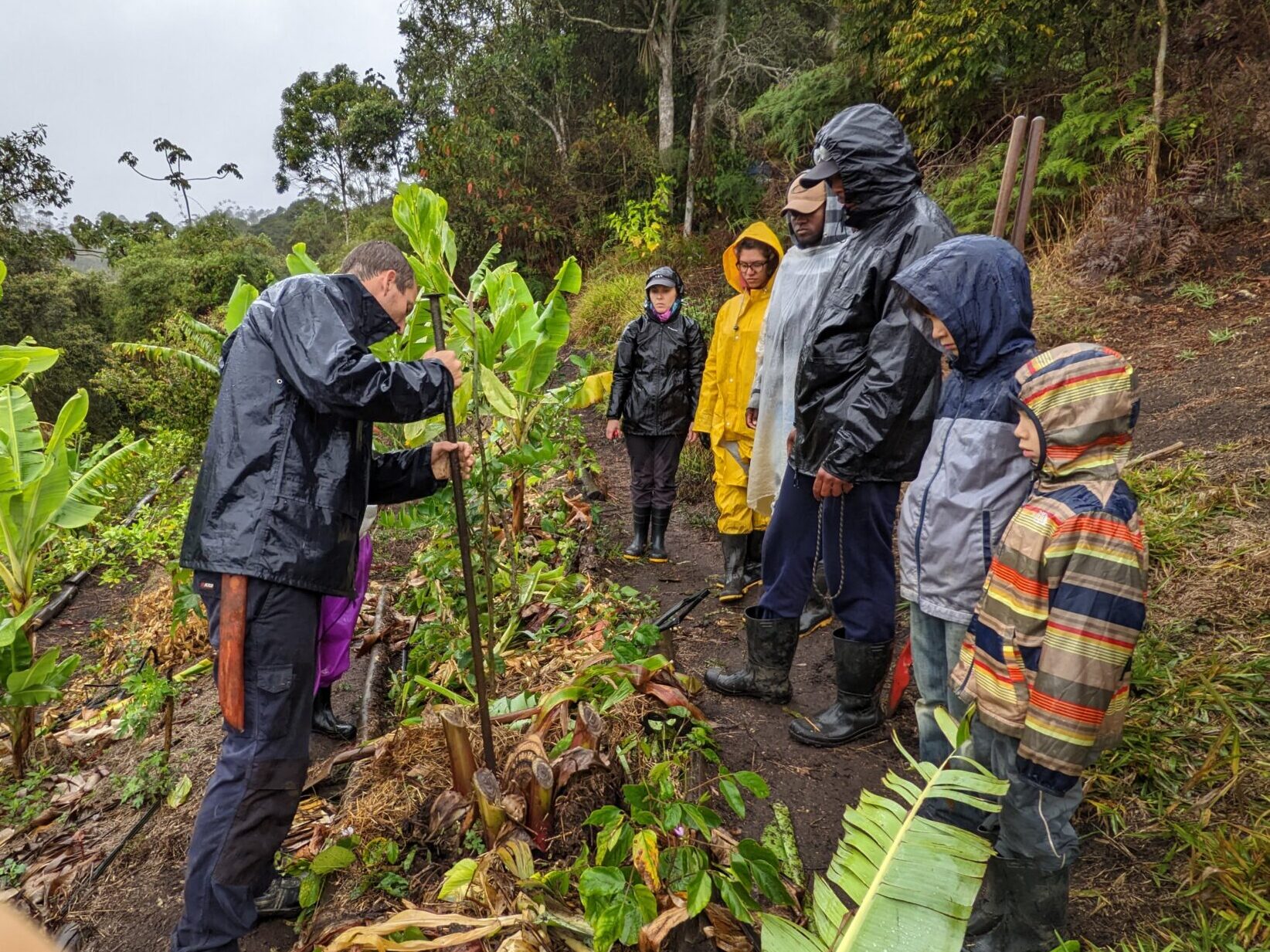
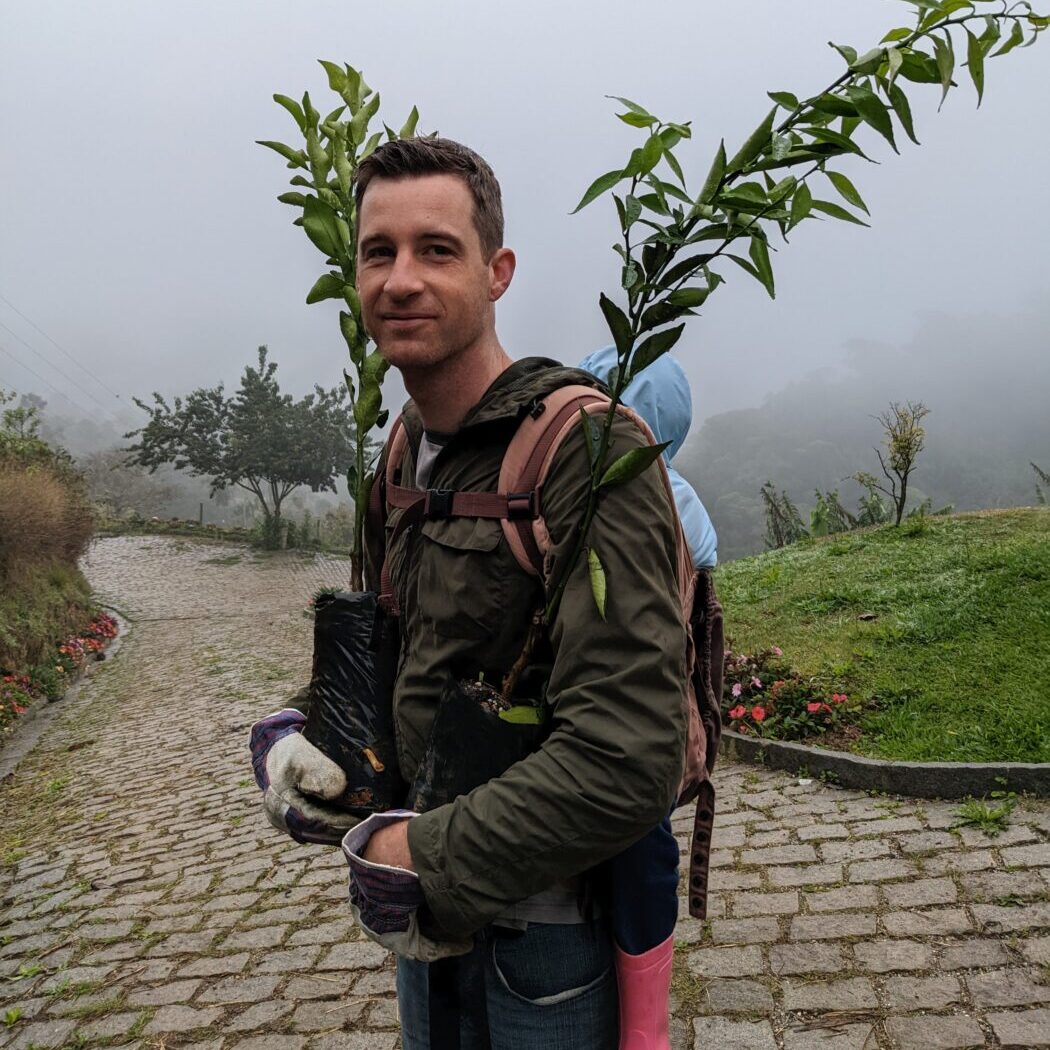
For the Cynic: Who Is This Benefitting?
So back to that eclectic work crew. It initially presented me with a puzzle. Who was this place really here to serve? Who was being used and who was benefitting?
Maybe it’s because I come from a country where the two main ideological poles accept as dogma that one group always gets screwed (they just can’t agree on who). But I couldn’t help speculating on the hierarchy at Eco Caminhos.
It’s a sick mind that assumes the most cynical explanation as a given and then goes from there. But I live in a sick world, saturated by a sick media environment. So I let the thought experiment play out.
Are the Brazilian-born apprentices being exploited in the service of the foreign-born visitors coming for an “experience?”
Or are the well-to-do foreigners being used as an income source to support the vision: an environment where hard-luck youths can develop their careers?
I tossed around the pieces like shards of color in a kaleidoscope. Each cynical arrangement seemed plausible, yet none jumped out as the obvious answer.
Another Possibility: Community as Ecosystem
Getting my hands dirty in the agroforestry systems made me consider another possibility. Maybe human communities, when tended to, work like healthy ecosystems.
Whether intentionally or not, the same type of thinking that trusts the health of crops to the forest’s natural balance seems to have bled into the approach to community at Eco Camhinos.
Bart, the farm’s owner, described how some of the volunteers and visitors he accepts explicitly come for rehabilitation. Some have depression. Some have addictions. Others come to get their life back on track, if it was ever on track to begin with.
Bart readily admits he is not a therapist and doesn’t actively try to treat or counsel people. He credits the natural environment and the structure of the farm as a healing factor. But I also wonder if our community operates like the plants in the agroforestry system. Each member occupies a niche. Each readily gives something the other needs.
Seen from the outside, combining international tourism with a local rehab program sounds absurd. They don’t even belong in the same part of town. (Though, I suppose, travel can a sort of rehab.)
Yet the community at Eco Caminhos, in some ways, mimics the self-sufficient web of nature. This isn’t your worn out cliché of the put-together developed world tourist coming and showing the rest of the world how to live. Nor is it the equally worn out counter-story, where the first-world traveler goes out and leaves her comfort zone to be transformed.
A Web of Give and Take
Here there is no hero. No prime beneficiary. No victim. Rather, each comes with their own self-interested motive. Some of us seek an experience. A place to recover. A place to connect with nature. Or a place to escape from old demons.
But once we come, we all have a few things in common. We share the work and the vision. We share meals, dish duty, the beautiful views of the valley, and a cardio workout every time we stomp up the mountain to meet at Colmeia or search for a tool. Those are the things that bind us together.
Nevertheless, we are still very different people. And that’s where the magic happens. We all contribute something special, something unique to our personhood. Sometimes it’s something observable, like a skill that can be taught or practiced. Other times it’s ineffable — an attitude, a life story, a certain kind of presence.
For those seeking rehab, the process is organic, not prescribed. For those of us seeking a new way of life, we experience a healthy, self-sustaining model to broaden our realm of possibility. Whatever the case, we are reaching our goals without fully understanding how. It happens as surely as lettuces absorb nitrogen from beans, as emergent trees cast their shadows on the fields below.
